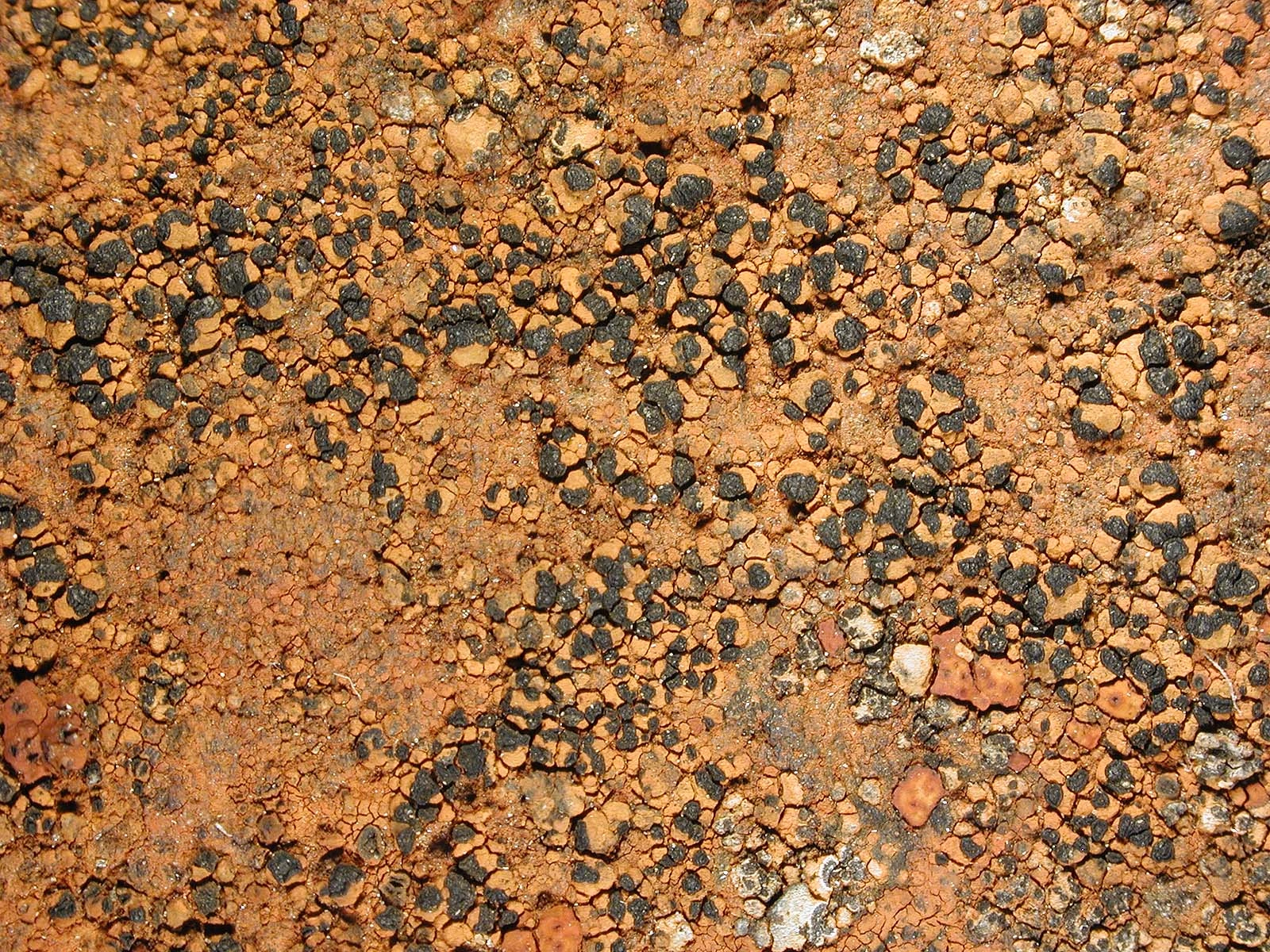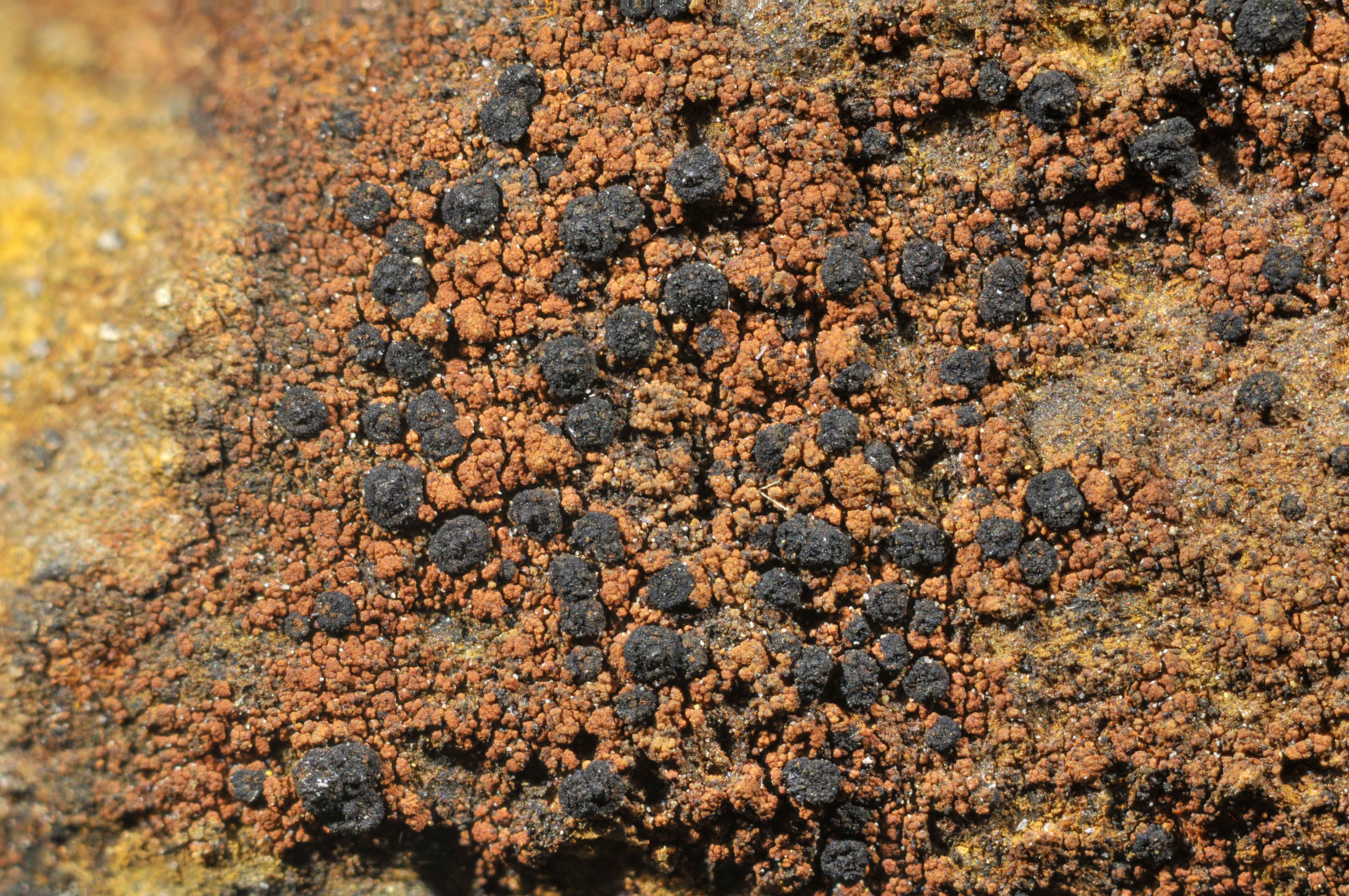Haugania oederi
- Innhold
- Morphology
- Chemistry
- Habitat
- Comment
- Look-alikes
Morphology
Thallus cracked to areolate, up to 5 cm diam.; hypothallus indistinct; areolae up to 0.2 (–0.5) mm diam., ochraceous, dull, usually angular, plane to weakly convex; medulla KI–. – Apothecia up to 0.5 mm diam., black, epruinose, angular, persistently plane, distinctly marginate, with an umbonate or gyrose disc; excipulum brownish black, K–; hypothecium dark brown, K–; hymenium colourless to faintly green in upper part; epihymenium olivaceous or greenish black, K–; no crystals or granules in the apothecia; ascospores 8 per ascus, mainly 3-septate, persistently colourless, 12–18 × 3–7 µm. – Conidiomata not seen.
Chemistry
No lichen substances.
Habitat
On rock rich in iron minerals, rather common both in the lowlands and in the mountains.
Comment
Rhizocarpon oederi and R. pycnocarpoides are the only evenly ochraceous species in the genus in Norway. The latter differs in forming somewhat larger areoles and apothecia, having more rounded and more sessile apothecia with a smooth to umbonate (not gyrose) disc, and larger, sub- to eumuriform ascospores. Morphologically, R. oederi may be confused also with Tremolecia atrata, but that species differs morphologically in having rounded, slightly concave apothecia with a smooth disc.

